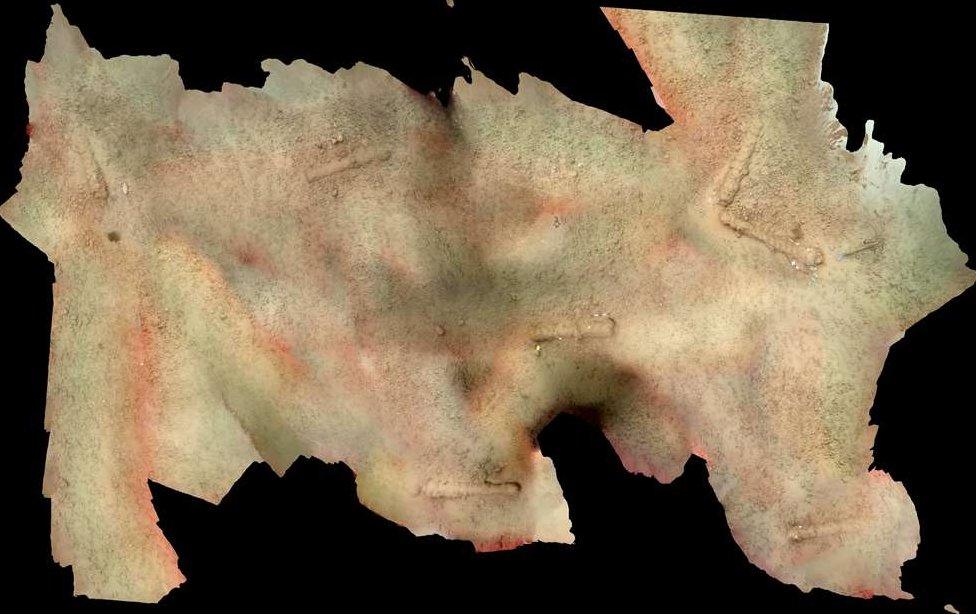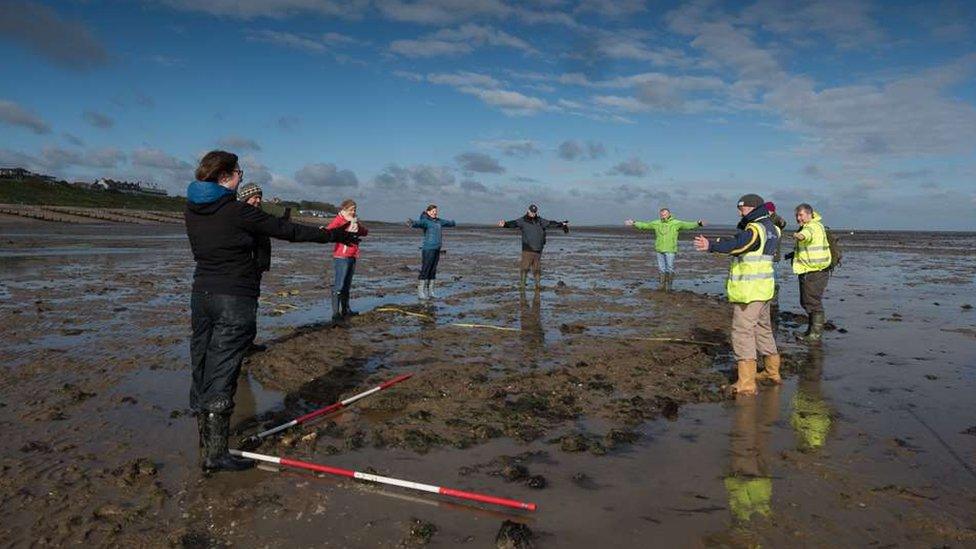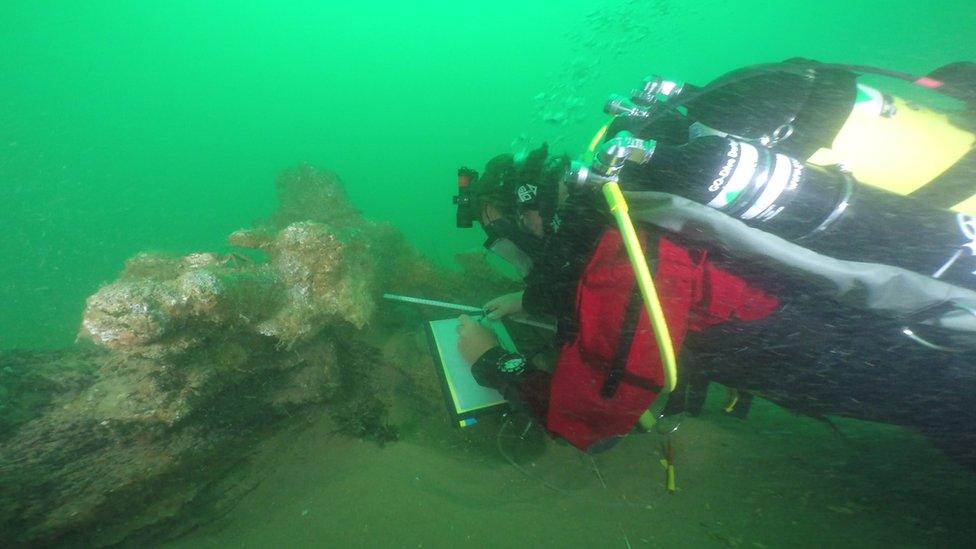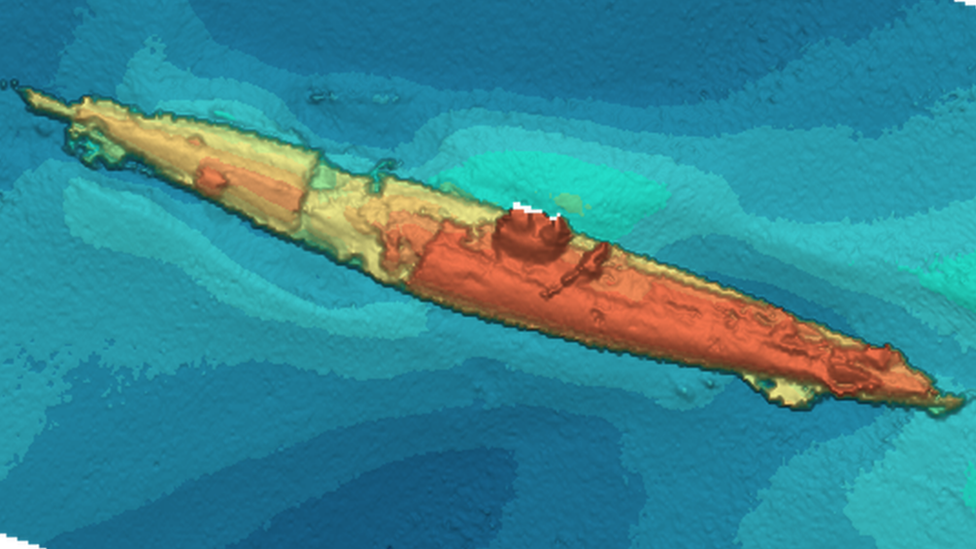U-boat and merchant shipwrecks given protected status
- Published

The U-boat was armed with an 88mm deck gun
The wrecks of a World War One U-boat and two merchant ships containing 15 cast iron cannon have been given protected status.
The submarine, off the coast of Whitby, sank 40 ships before being bombed in 1918 with the loss of all its crew.
It is thought the two vessels, discovered near Chesil Beach, in Dorset, were sunk in the 18th Century.
Historic England said the sites "comprise important elements of our maritime heritage".

Seven cannon can be seen lying on the sea bed near Chesil Beach
It said it was also investigating the discovery of the bottom timbers of an oak-built boat at Tankerton, near Whitstable, which could date back as far 1200AD.
John Glen, minister for arts, heritage and tourism, said: "It's important that we protect these two sites that are part of our country's seafaring and naval history.
"The shipwreck off Chesil Beach is a rare discovery and by protecting it we can encourage further study of the site.
"The listing of the U-boat wreck off Whitby is also particularly poignant, as we continue to mark the centenary of World War One and remember the sacrifices of those who fought 100 years ago."

Historic England said the age of the ship found near Tankerton is estimated to be between 1200 and 1800AD
The U-boat has been described as a German Imperial Navy UC-70 mine-laying submarine.
It was discovered as part of work to research and survey submarine losses within UK territorial waters around England.
The vessels found near Chesil Beach could be the Dutch West Indiaman 'De Hoop' which stranded at Chesil Cove in 1749 and British cargo vessel 'Squirrel' which stranded on Chesil Beach in 1750.
Duncan Wilson, chief executive of Historic England, said: "The importance of the UC-70 lies in its historical interest and the vulnerability of its component parts as well as its sensitivity as a war grave.
"The Chesil Beach wreck site is also important but for different reasons - it's rare to discover wooden ships of this age surviving on the seabed with so many cannons."
- Published18 August 2017

- Published19 October 2016
